Physics 211 Lab #7:
Rotational Dynamics II
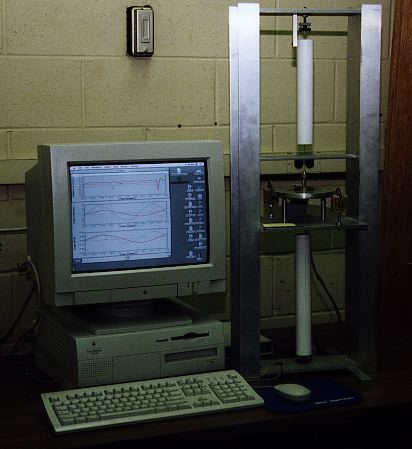
A torsion oscillator will be used to investigate the relationship between torque, angular acceleration, and moment of inertia during the pure rotation of an object (see Lectures
18, 19,
20).
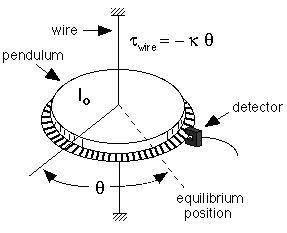
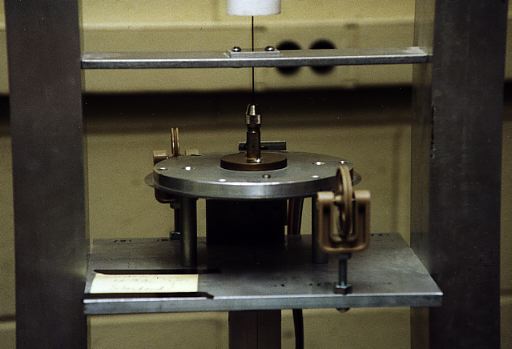
Key Activities:
 Balancing of Torques on a Torsion Pendulum
Balancing of Torques on a Torsion Pendulum
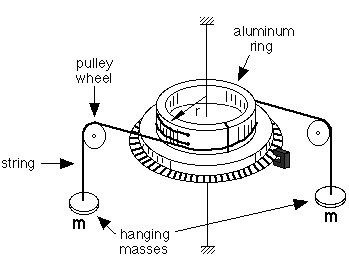

In the first activity, the torque exerted by the wire on the torsion pendulum will be studied and calibrated. In particular, by studying the angle Ø at which equilibrium (net torque = 0) is reached between the torque exerted on the pendulum by the hanging masses, 2mgr, and the opposing torque exerted on the pendulum by the wire, kØ, the torsion constant k can be determined, k = 2mgr/Ø (Lectures
18 and
19).
 Relationship Between Torque and Angular Acceleration
Relationship Between Torque and Angular Acceleration


The relationship between the torque exerted on the pendulum by the wire, and the angular acceleration of the pendulum will be studied in another activity.

Notice that the angular acceleration "follows" the torque (middle and lower graphs), and the ratio, torque/angular acceleration (top graph), is roughly constant and provides an excellent measurement of the moment of inertia, I, confirming the relationship: torque = I * angular acceleration (Lectures
18 and
19).
 Energetics of a Torsion Pendulum
Energetics of a Torsion Pendulum

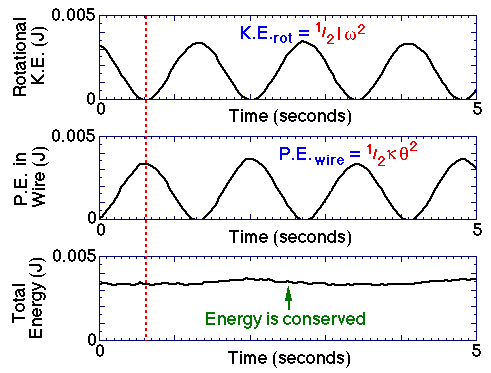
The transfer of energy between the kinetic energy of the rotating pendulum, and the potential energy stored in the wire, is illustrated in this activity. Notice that energy is conserved as expected (Lectures
18 and
19).
 What's happening?
What's happening?
 Oscillatory Period and the Moment of Inertia
Oscillatory Period and the Moment of Inertia



An introduction to the relationship between oscillatory period, T, of the torsion pendulum, and the moment of inertia of the pendulum, I, is illustrated in this activity. These results clearly show the expected T ~ (I)1/2 dependence of the period on the moment of inertia (Lectures
24 and
25).
 What's happening?
What's happening?












